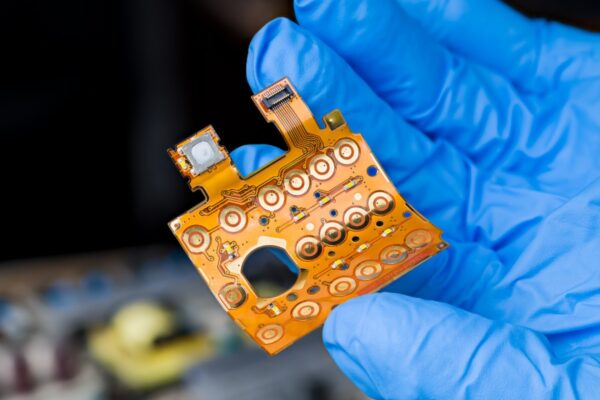What is Ball Grid Array (BGA)
A Ball Grid Array (BGA) is a packaging technology which is a type of surface-mount package that offers advantages such as efficient communication, space-saving design, and high density. Unlike traditional connectors, a BGA does not have leads. Instead, it utilizes a grid of small metallic conductor balls, known as solder balls, for electrical interconnection.
The BGA package consists of a laminated substrate at the bottom, to which the solder balls are attached. The die or integrated circuit is connected to the substrate using wire bonding or flip-chip technology. Wire bonding involves connecting the die to the substrate using thin wires, while flip-chip technology involves directly attaching the die to the substrate using solder bumps.
One key feature of a BGA is the use of internal conductive traces on the substrate. These traces play a crucial role in ensuring proper electrical connectivity between the die and the external circuitry. The BGA technology offers advantages such as minimal inductance, high lead count, and consistent spacing between the solder balls.
Frequently Asked Questions
What Is the Difference Between BGA and LGA
In summary, BGA and LGA are both types of electronic packaging technologies primarily utilized for mounting components onto a printed circuit board. However, there is a distinction in their electrical connections. LGA relies on pins or contacts, whereas BGA utilizes small solder balls.
How Does a BGA Work
It functions by utilizing a grid of solder balls or leads to facilitate the transmission of electrical signals from the integrated circuit board. Unlike the PGA, which employs pins, the BGA employs solder balls that are positioned on the printed circuit board (PCB). The PCB, through the use of conductive printed wires, provides support and connectivity for electronic components.
What Size Is the Ball Grid Array
The ball grid array (BGA) package comes in various sizes, ranging from 17mm x 17mm to 35mm x 35mm. It offers ball pitches of 0.8mm and 1.0mm, resulting in ball counts that range from 208 to 976 balls. Additionally, PBGA packages are available in both 2 and 4 layer substrate designs.
What Are BGA Components
BGA components are a specific type of components that are highly sensitive to humidity and temperature. Therefore, it is crucial to store them in a dry environment with a constant temperature. Additionally, operators must strictly adhere to the operation technology process to prevent any negative impact on the components before assembly.
What Is the Difference Between BGA and FPGA
FPGA, short for field programmable gate array, is an integrated circuit that can be customized by a designer after it has been manufactured. On the other hand, BGA, which stands for ball grid array, is a packaging system for integrated circuits that utilizes an array of solder balls to connect the substrate to the package pinouts.
What Is BGA Substrate
In BGA packages, an organic substrate is utilized instead of a lead frame. The substrate is typically composed of bismaleimide triazine or polyimide. The chip is positioned on top of the substrate, while solder balls located on the underside of the substrate establish connections with the circuit board.
What Is the Difference Between BGA and FBGA
As with all BGA packages, FBGA packages utilize solder balls arranged in a grid or array at the bottom of the package body for external electrical connection. However, the FBGA package distinguishes itself by being near-chip-scale in size, featuring a smaller and thinner body compared to the standard BGA package.
Can BGA Be Replaced
Once all the excess solder has been eliminated, it is possible to reball the BGA. Reballing entails using a stencil to place new solder spheres onto the BGA. After removing the excess solder and reballing the BGA, the components and PCB can be re-soldered and reattached.
What Is the Difference Between QFP and BGA
BGA is more expensive than QFP due to the higher cost of laminate board and resin associated with the substrate that carries the components. BGA uses BT resin, ceramic, and polyimide resin carriers, which are more costly, while QFP uses plastic molding resin and metal sheet lead frames, which are cheaper.
What Is the Difference Between BGA and LGA Electronics
LGA (Land Grid Array) electronics are similar to BGAs, but they differ in that LGA parts do not have solder balls as leads. Instead, they have a flat surface with pads. LGAs are commonly used as a physical interface for microprocessors and can be connected to the device either through an LGA socket or by soldering it directly to the PCB.





